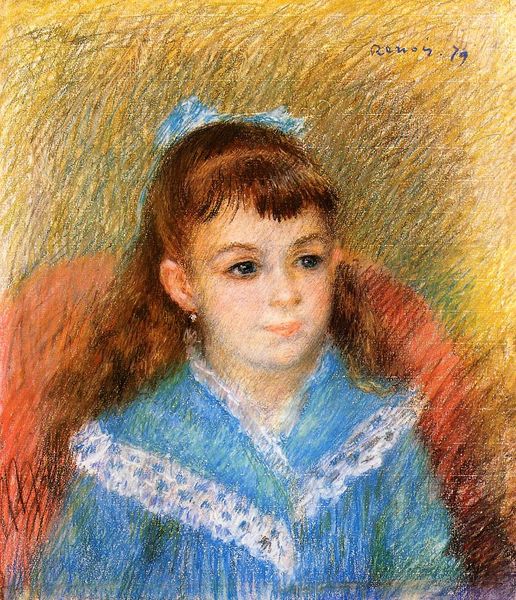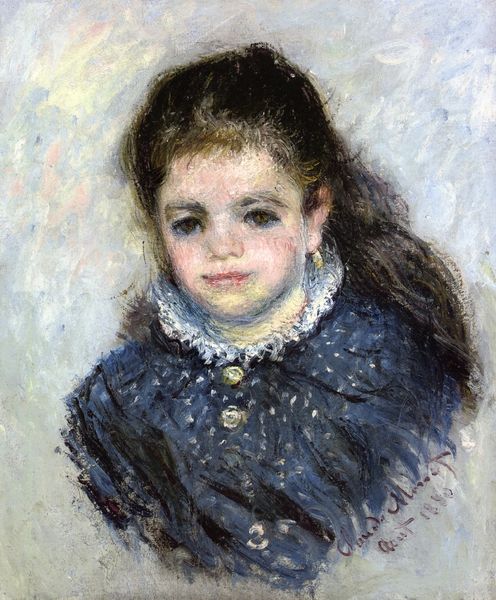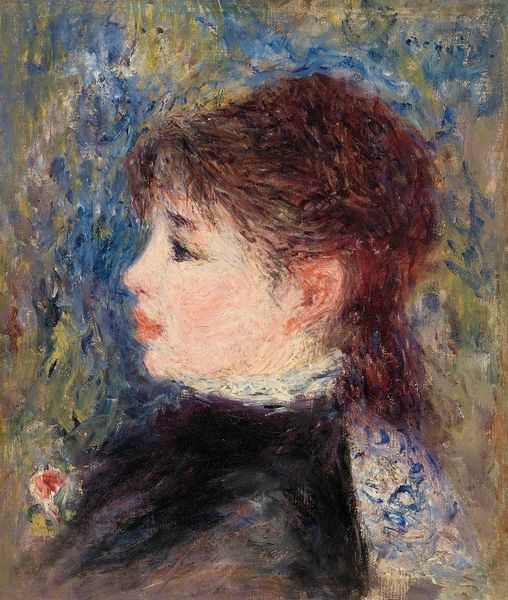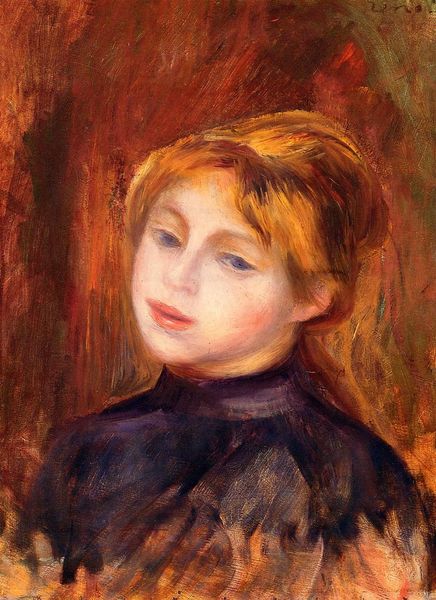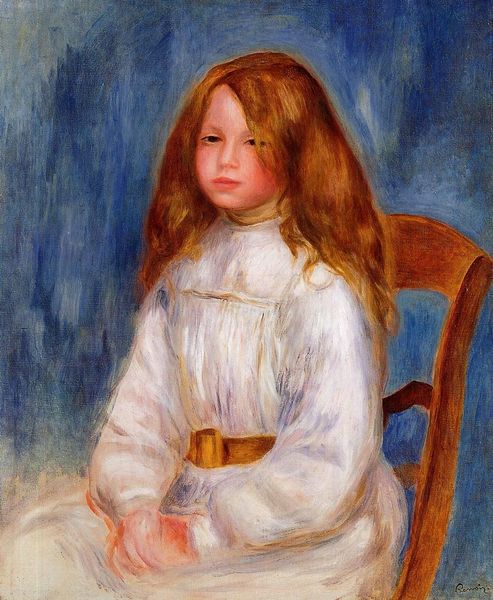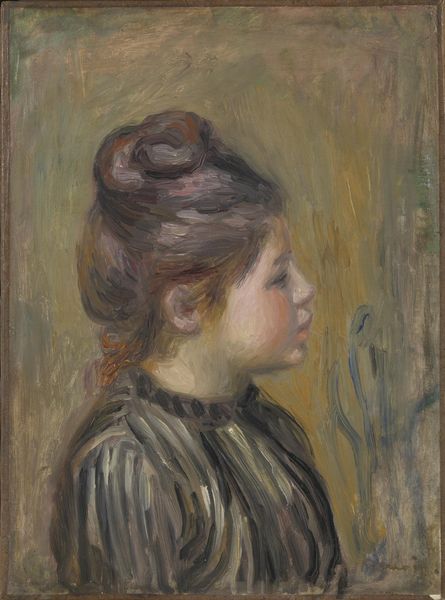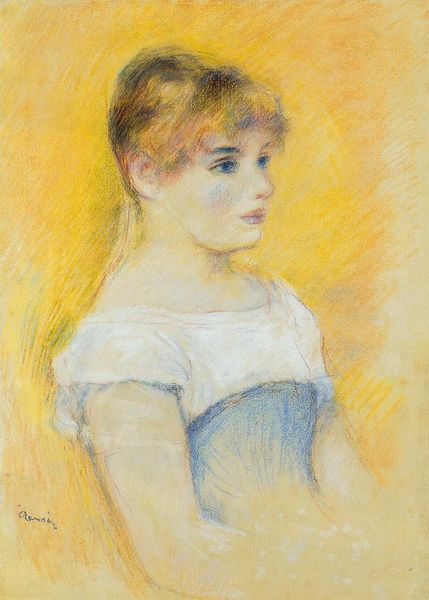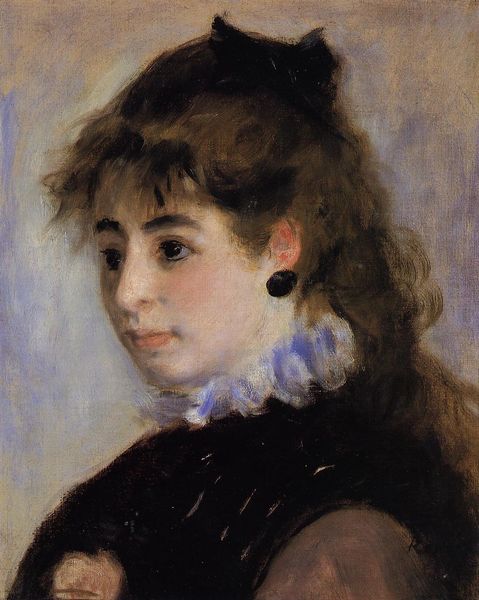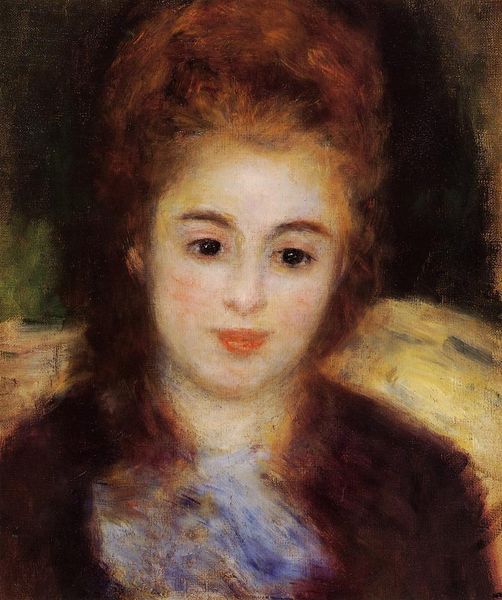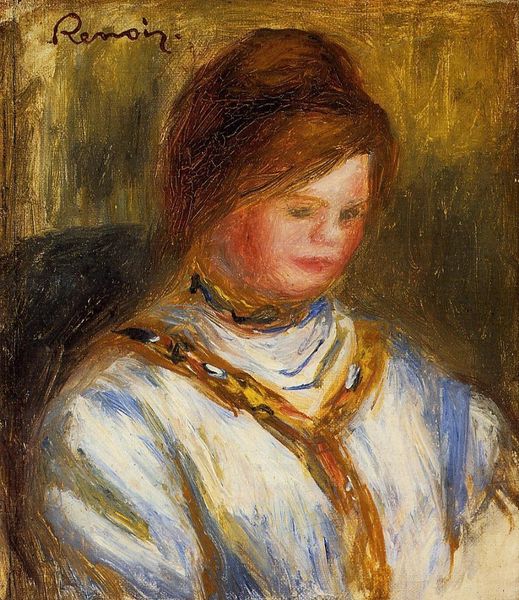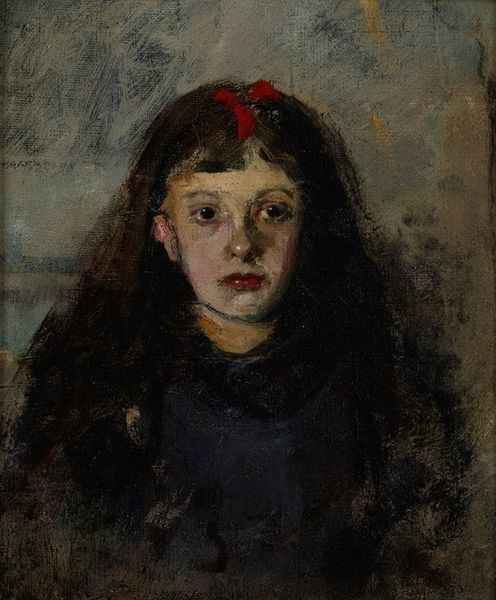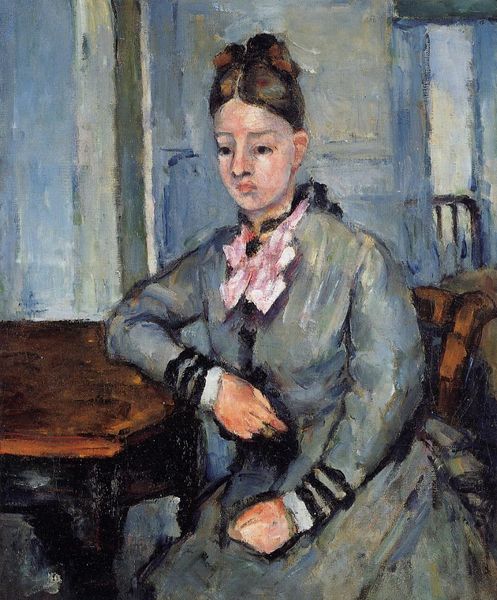
#
portrait
#
acrylic
#
possibly oil pastel
#
oil painting
#
portrait reference
#
child
#
acrylic on canvas
#
underpainting
#
painting painterly
#
lady
#
portrait art
#
fine art portrait
#
digital portrait
Copyright: Public domain
Curator: This is Mary Cassatt’s "Marie Therese Gaillard," created around 1894. It's a compelling portrait; there’s something both vulnerable and intensely present in the subject’s gaze. Editor: It’s interesting how the pastel strokes almost feel like they’re capturing a fleeting moment, like she's just about to turn away. How do you interpret this work in relation to Cassatt’s broader practice? Curator: Cassatt often depicted women and children, but it's vital to examine *how* she did it. Her images offer an alternative to the male gaze, presenting these subjects from a perspective rooted in female experience. Note the child's averted gaze, the comfortable, though formal, clothing. What is it communicating? Is Cassatt offering an unromanticized vision of childhood, rejecting sentimental tropes? Editor: I see what you mean. The averted gaze does challenge the traditional power dynamics of portraiture. Do you think Cassatt was deliberately subverting expectations of how female subjects, especially children, were depicted at the time? Curator: Absolutely. Consider the Impressionist movement's context – its challenge to academic art. Cassatt, within that milieu, further disrupted conventions by focusing on the domestic sphere, but from a decidedly female point of view. It's a commentary on the limitations placed upon women, but also a celebration of their inner lives and relationships. This young girl looks directly out of the turn of the century into the future. How should we understand her presence in today's world? Editor: It’s like Cassatt’s giving her a voice, or at least acknowledging her existence as an individual, not just a decorative object. Seeing it this way makes me think about how much—or how little—has changed in terms of representation. Curator: Precisely. By understanding the social and historical context, we can appreciate Cassatt’s work not just as a beautiful image, but as a potent statement about gender and representation. Editor: This has really opened my eyes. I’m definitely going to explore Cassatt's work in more detail now. Thank you.
Comments
No comments
Be the first to comment and join the conversation on the ultimate creative platform.
